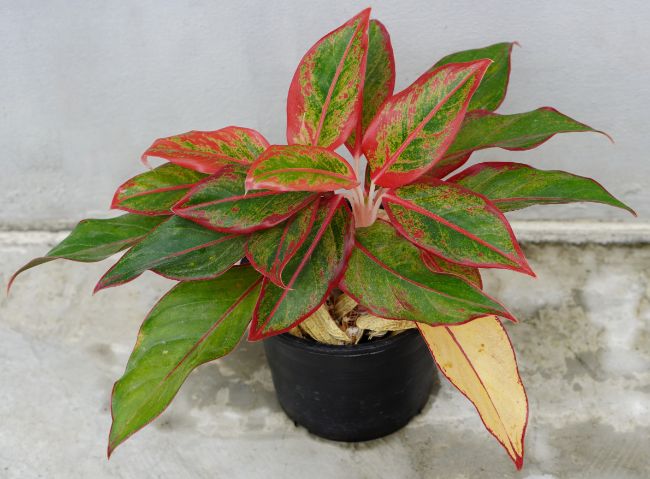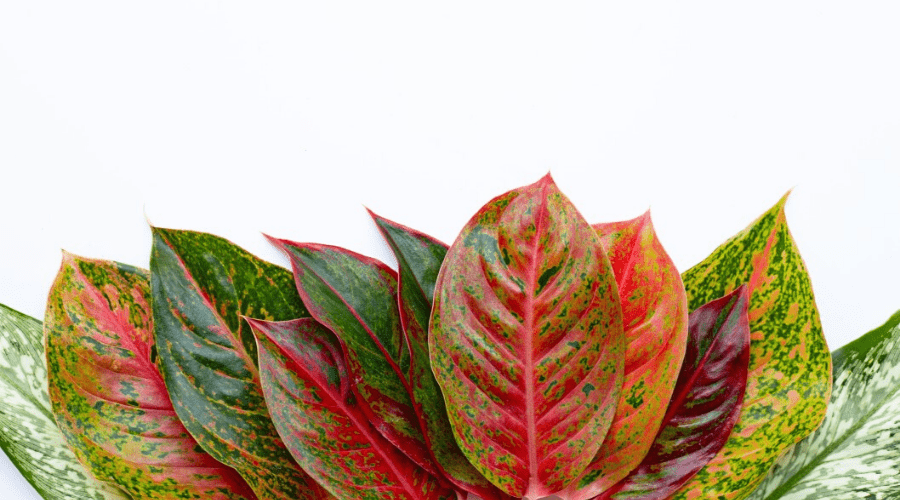Aglaonema (Chinese evergreen) is the most popular houseplant. This versatile stunner has lush foliage and can cope with indoor growing conditions.
The houseplant is native to the tropical rainforest of Southeast Asia. It is highly appreciated in the United States, Canada, Australia, and many countries in Europe.
The ease of care requirements has made many gardeners neglect the houseplant. The indoor plant develops yellow and brown leaves in the long run.
So, why is my aglaonema dying? The possible causes are direct exposure to sunlight, improper watering, low humidity, temperature stress, pest infestations, diseases, and more.
Aglaonema leaves drooping, curling, and turning yellow or brown are signs of health issues. The best solution is to investigate the cause and fix it.
This article provides more insights into the causes of aglaonema death and various ways on how to save Chinese evergreen from dying. Take the time to read through it from the start to the end.
You May Also Like: Why Are the Leaves on My Aglaonema Turning Yellow?

Reasons Why My Aglaonema Is Dying? (Possible Causes)
Direct Exposure to Sunlight
Aglaonema plants are native to tropical forests in Asia. These plants grow under the canopy and receive low light due to the shade.
Aglaonema can cope with low lighting conditions. But extremely low light will result in slow growth and poor health status.
Subjecting the houseplant to bright indirect sunlight for 2-3 hours is the best option. The plant will undertake its physiological processes to enhance faster growth and good health.
But exposing the houseplant to bright direct sunlight will cause more harm. You will notice the aglaonema stems drooping and leaves turning brown due to sunburn.
Prolong exposure to direct sunlight will make aglaonema wilt and start dying. Read my Chinese evergreen care guide to learn how to save a dying aglaonema.
Low Humidity
The tropical rainforest has a high humidity level. The air has adequate moisture to enhance beautiful foliage growth on the aglaonema plants.
But the indoor humidity is dynamic. Dry air in the house during summer can pose a significant health threat to your favorite plant.
Many gardeners with involving day jobs find it challenging to regulate indoor humidity levels. The low humidity ends up making aglaonema wilt and dies in the long run.
I recommend misting the houseplant several times a day. The technique increases humidity level, and you will reduce the risk of losing your aglaonema plant.
You May Also Enjoy: Why Are My Chinese Evergreen Leaves Turning Brown?
Overwatering Issue
Damp soil is the leading cause of death for any indoor plant. The wet environment facilitates the emergency of fungal diseases like root rot.
Roots help the plant to absorb water and other vital nutrients to support growth. But root rot damages these plant parts to hinder their functions.
You will notice your houseplant leaves drooping, turning yellow and brown before starting to wilt. Overwatering occurs when there is no proper drainage.
Aglaonema plants need less water in winter due to reduced growth rates. The best option is to consider watering the houseplant once a month to avoid overwatering.
If your aglaonema is dying due to root rot, consider cutting the affected parts and re-potting the plant to a new fresh pot with well-drain soil.
Learning how to save a dying aglaonema due to overwatering can be challenging. But the faster reaction and taking the right course of action can save the day.
Temperature Stress
Aglaonema plants prefer a temperature range of 70-85oF. It allows the houseplant to develop stunning foliage and maintain good health.
A high temperature above the optimum requirement will make aglaonema wilt and die. The issue occurs when the houseplant is placed near heaters or radiators.
Chinese evergreens are too sensitive to cold temperatures. Any indoor temperature below 10oF is harmful to the houseplant.
But regulating indoor temperature during summer and winter can be challenging. I recommend buying a digital thermometer to help detect temperature changes.
Remember to keep your aglaonema plant away from cold drafts, heaters, and radiators. The technique will help revive your dying Chinese evergreen.
Underwatering Problem
Aglaonema thrives in soil with low to medium moisture. But due to our busy schedules, we end up neglecting the houseplant for an extended period.
Any houseplant that receives inadequate water supply displays its stress through its leaves. You will notice aglaonema leaves drooping and turning brown.
Underwatering the Chinese evergreens will foster wilting and dying. But reviving a dying aglaonema due to insufficient water supply is easy.
I recommend coming up with a healthier watering routine to avoid underwatering and overwatering issues.
Keep in mind that aglaonema plants need less water during winter due to the reduced growth rate. Water the houseplant about 2-3 times a month during spring and summer.
You Can Also Read: Why Are My Chinese Evergreen Leaves Curling?
Over-Fertilization
Aglaonema plants are not heavy feeders. These plants do not need frequent fertilization since they are slow growers. A small dose of liquid fertilizer is adequate for Chinese evergreens.
But many gardeners make mistakes when fertilizing their houseplants. Some think excess nutrients will make the houseplant develop stunning foliage and stay healthy.
Over-fertilization results in the buildup of excess salt around the root system. The salt becomes toxic to the plant and causes wilting in the long run.
The excess salt will draw out water from the roots and you will notice aglaonema stems drooping. Failure to fix the problem might lead to aglaonema death.
I recommend fertilizing the aglaonema plant during the growing season (summer and spring). Avoid applying fertilizer to the houseplant in winter due to the reduced growth rate.
If you happen to have over-fertilized your houseplant, use distilled water to flush out the excess salt. Another alternative is to re-pot the plant to a new pot with a fresh mix.
Pest Infestations
Insects pose a significant danger to all houseplant types. But some indoor plants are more susceptible to bugs than others.
If you notice your houseplant looking weak with yellow leaves and brown spots, it is due to a pest infestation problem.
Chinese evergreens are known to attract aphids, spider mites, and mealybugs. These insects are annoying and harmful to aglaonema plants.
I recommend the use of horticulture soap to eliminate these tiny creatures from your houseplant. Any deal could pose a challenge to save a dying aglaonema from pest problems.
Disease Problem
Aglaonema plants are prone to bacterial infection. The disease usually affects the aglaonema foliage and stem at some point.
Bacterial blight causes black blotches on the leaves and enhances aglaonema stem rot. The disease problem is prevalent in overwatered Chinese evergreens.
Isolating the plant from other houseplants should be the first thing to consider. Remove the affected foliage and nurse the houseplant to recover.
Fungal infection is rare on aglaonema plants. But it comes to happen due to overwatering and results in root rot. The disease is more brutal than bacterial leaf blight.
Frequently Asked Questions
How Do You Revive Aglaonema Wilting?
Wilting occurs due to a lack of soil moisture. I recommend watering the houseplant from the top until the soil is saturated. When the soil is damp, place the plant pot on a sink and allow it to rest until excess water gets drain. Place the plant back to the saucer and better spot.
How Do You Save a Dying Aglaonema Plant?
The best technique is to remove the dead leaves and consider unpotting. Scrub soil from the roots and place the plant into the water. If the issue is not serious, the plant will rehydrate and get saved.
Why Is My Aglaonema Turning Brown?
Tips and edges of aglaonema leave turning brown are due to overwatering and over-fertilization. Tap water is another underrated cause of aglaonema turning brown. The water contains salt, chlorine, and fluoride that facilitate the issue.
How often Should I Water Aglaonema?
Aglaonema does not need regular watering. The rule of thumb is to keep the soil moist by watering once every few weeks. Water the plant once a month during winter since it is dormant.
How Do You Fix Leggy on Aglaonema?
Re-pot the plant into a large container to avoid the root-bound issue. You should also consider relocating the plant to a region that receives bright indirect sunlight. Prune the leggy stems to restore a bushy appearance.

You May Also Enjoy: 20 Stunning Aglaonema Varieties (With Pictures)
In Conclusion
Your aglaonema plant could be dying due to temperature stress, over-fertilization, direct sunlight exposure, improper watering, and poor water quality.
The best option is to identify the cause and devise techniques on how to save a dying aglaonema plant. I recommend using the information mentioned in the article to save your favorite plant.
You Can Also Read: Why Is My Threadleaf Aralia Dropping Leaves?
More Sources and References
- Bridget Kelly. Chinese evergreen Houseplant Pests. Gardenologist.
- Scot Nelson. Bacterial Leaf Blight of Aglaonema. The University of Hawii.
- Editor. Light and Moisture Requirement. Caroline State University.
